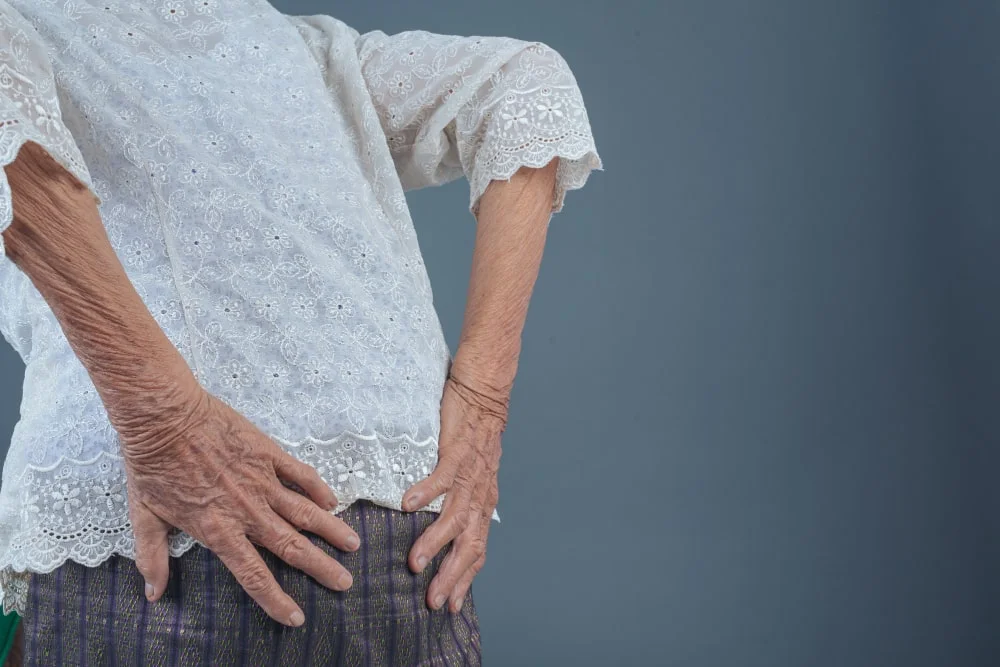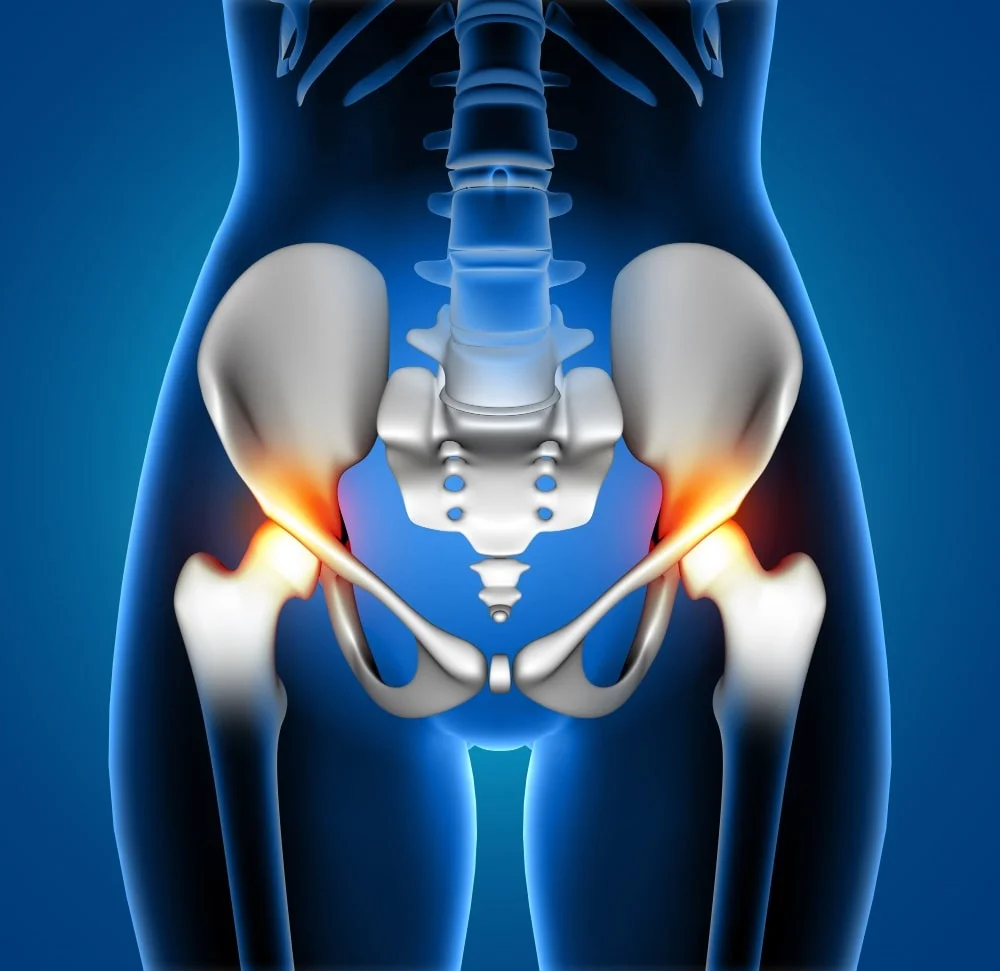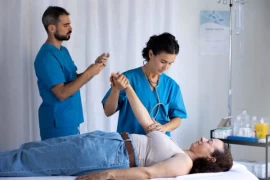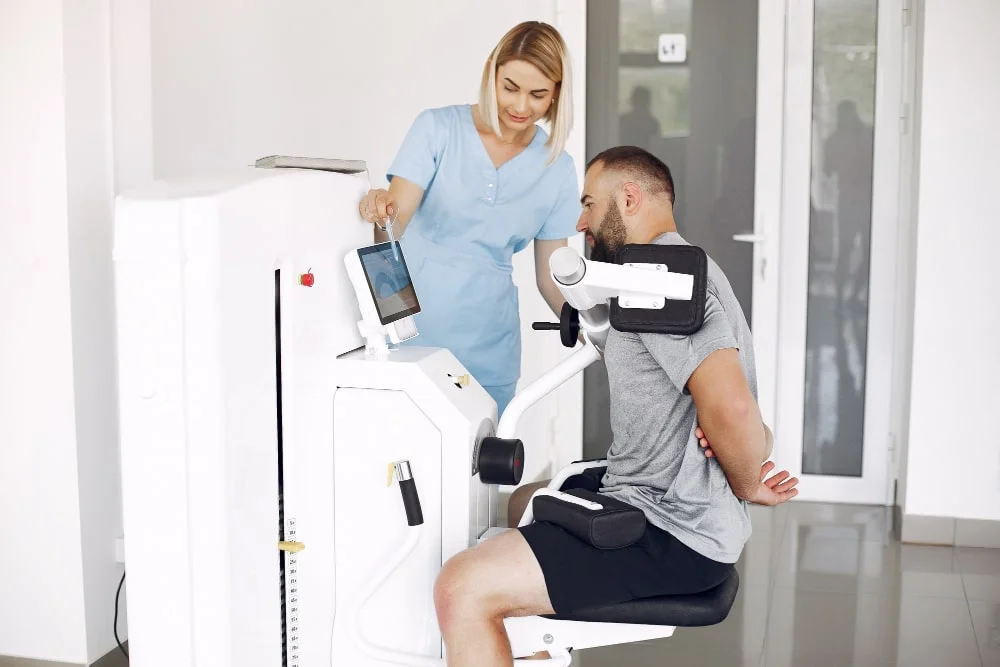
Hip Osteoarthritis (Coxarthrosis)
- Hip Osteoarthritis (Coxarthrosis)
- What Is Hip Osteoarthritis?
- What Are the Causes of Coxarthrosis?
- Symptoms
- How Is It Diagnosed?
- My Treatment Approach
- Conclusion and My Recommendations
As a specialist in Physical Medicine and Rehabilitation, one of the most common issues I encounter in my clinical practice is osteoarthritis of the hip joint. Medically referred to as coxarthrosis, this condition is a progressive and often painful process that can significantly diminish one’s quality of daily life. In order to help my patients better understand this condition and approach treatment options more consciously, I would like to explain coxarthrosis in all its aspects in this article.
What Is Hip Osteoarthritis?
Coxarthrosis is a chronic disease characterized by the gradual wearing down, thinning, and eventual friction of the cartilage tissue located in the hip joint. The hip joint is formed by the head of the femur and the acetabulum of the pelvis and is one of the body's main weight-bearing joints. Therefore, degeneration in this region can seriously affect both mobility and pain-free living.
What Are the Causes of Coxarthrosis?
Many factors play a role in the development of hip osteoarthritis. The most common causes include:
- Advanced age: Natural aging process of the cartilage tissue
- Trauma: Previous hip fractures or dislocations
- Developmental Dysplasia of the Hip (DDH): Anatomical abnormalities that can initiate degeneration at an early age
- Excess body weight: Increases the load on the hip joint
- Genetic predisposition
- Rheumatic diseases
- Repetitive stress: Heavy labor, sports injuries, etc.

Symptoms
Symptoms of hip osteoarthritis typically develop gradually. The most frequently observed complaints are:
- Pain in the groin, hip, lower back, and thigh regions
- Morning stiffness and restricted movement
- Pain increasing while walking or climbing stairs
- Limping or a feeling of leg length discrepancy
- Nighttime pain and restlessness
How Is It Diagnosed?
Diagnosis begins with the patient's clinical history and physical examination. After thoroughly investigating the patient’s complaints, we use imaging methods such as:
- Plain radiographs of the hip: Helpful in showing joint space narrowing, osteophyte (bone spur) formation, and sclerosis (hardening) at joint margins
- Magnetic Resonance Imaging (MRI): Useful in early stages to detect cartilage damage, labral tears, or soft tissue pathologies like synovitis
My Treatment Approach
The primary goal of treatment is to reduce pain, preserve joint mobility, and improve the patient's quality of life. I tailor the treatment plan according to the patient’s age, stage of the disease, daily activity level, and expectations. My core approach includes the following steps:
- Conservative Treatments (Non-Pharmacologic and Pharmacologic Approaches)
- Exercise and Rehabilitation Programs: I particularly recommend low-impact exercises such as swimming, stationary cycling, and Pilates. Special hip exercises aimed at correcting muscle imbalances can help slow disease progression.
- Intra-articular and Periarticular Injection Therapies: Injection treatments are especially effective in early to mid-stage patients who prefer to avoid surgery. I perform these procedures under ultrasound guidance, ensuring both safety and precision. Key injection options include:
- When Needed: Orthoses and Assistive Walking Devices: Assistive devices such as canes or walkers are recommended for advanced-stage patients to reduce fall risk and redistribute joint load.
- Surgical Options: If all conservative and interventional methods fail and significant pain and functional loss persist, hip replacement surgery may be considered in collaboration with an orthopedic surgeon. I find it essential to exhaust all non-surgical options before opting for surgery.
- Rest and lifestyle modifications
- Weight management: Crucial for reducing joint load
- Pain relievers and anti-inflammatory medications (NSAIDs): Preferably for short-term use
- Physical therapy modalities: Therapies like ultrasound, TENS, and hot/cold applications are effective in pain relief
- Exercise programs to maintain joint range of motion and muscle strength
- Corticosteroid Injections: Provide quick pain relief, especially in patients with synovitis. However, repeated use should be limited.
- Viscosupplementation (Hyaluronic Acid Injections): Increases joint lubrication and supports mobility. Particularly useful in moderate stages.
- PRP (Platelet-Rich Plasma): Derived from the patient’s own blood and rich in healing growth factors. Supports cartilage repair.
- Smart Injectable Serum (IL-1 Antagonist Protein Therapy): A biological treatment that suppresses inflammation. May be particularly effective in inflammation-dominant cases.
- Exosome Therapy: Composed of nanoparticles involved in cellular communication. A promising regenerative therapy, exosomes deliver restorative signals to damaged tissues.
- Stem Cell Therapy: Stem cells harvested from bone marrow or fat tissue can aid in cartilage regeneration. I prefer this method particularly for younger and middle-aged patients.
- Prolotherapy: Stimulates healing of ligaments and tendons via targeted injections. Very effective for ligament laxity around the hip.
- Neural Therapy Injections: Aims to regulate disrupted neural signals, especially beneficial in functional disorders.
Conclusion and My Recommendations
Hip osteoarthritis is a manageable condition with the right approach. Early intervention can slow its progression. Personalized rehabilitation programs and targeted injection therapies offer the potential to delay or even prevent the need for surgery.
If you are experiencing hip pain, stiffness, or movement limitations while walking, I recommend consulting a Physical Medicine and Rehabilitation specialist without delay.
Remember, timely and appropriate intervention is the key to a healthier and more active life.

Dr. Elif Berber
Specialist in Physical Medicine and Rehabilitation





